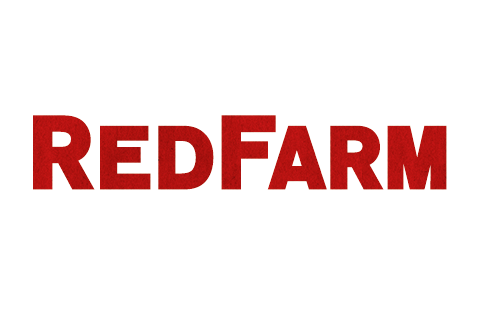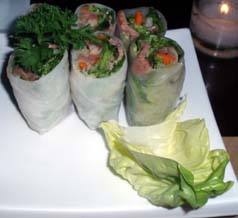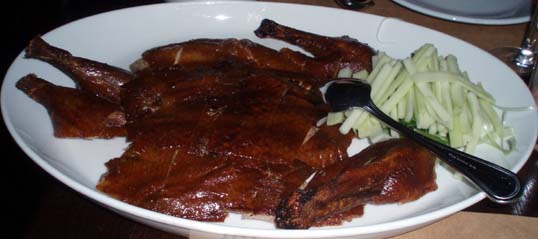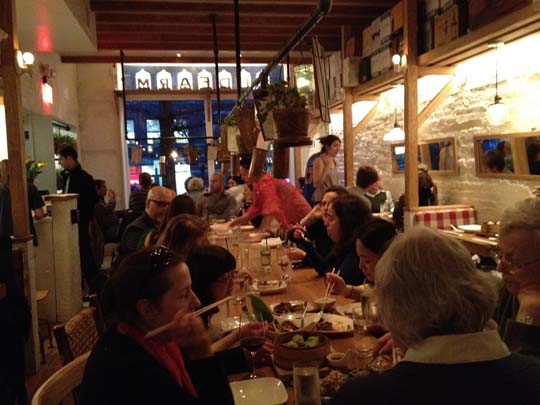
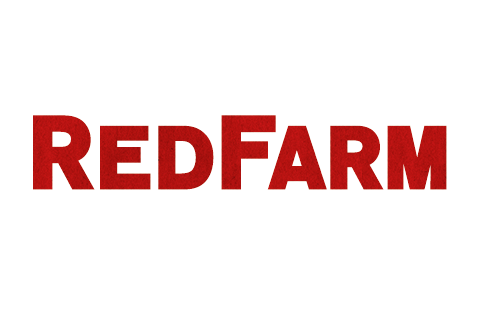 I was put off by the lines—the promise of an uncertain wait for one of the few communal seats. That’s why I didn’t visit RedFarm after it opened last August.
I was put off by the lines—the promise of an uncertain wait for one of the few communal seats. That’s why I didn’t visit RedFarm after it opened last August.
I’d liked the dim sum of the talented chef, Joe Ng, at Chinatown Brasserie. It was everything RedFarm isn’t: a big-box place that takes reservations and de-humanizes the cuisine, but was pretty darned good, for what it was—way back in 2007.
Then Pete Wells gave it two stars, and if he’s a critic of limited range, I’m pretty sure he gets casual Chinese: his review of Wong, in early January, was right on the money. So I was ready to give RedFarm a try.
At 6:30 p.m. on a Tuesday evening, all 45 seats were packed, and the host quoted a wait of forty-five minutes to an hour. He offered to take a phone number and text me when a spot opened up (there is no waiting space at all), but I didn’t want it that much. A couple of evenings later, I had better luck. But even at 5:30, there were only about three seats free. That’s how popular RedFarm is.


Shrimp and Snowpea Dumplings ($10; above left) might be taken as typical of Chef Ng’s knack for dim sum. They’re not merely cute (with little “eyes” staring back at you), but colorful (the skin is transluscent) and bursting with flavor.
The Creekstone Farms prime dry-aged ribeye steak ($39; above right) is marinated overnight, and served sliced, with crisp french-fry sized mini-spears of asparagus. It isn’t as thick or as musky as the better steakhouses serve, but it is better than you expect it to be.
This isn’t the right way to dine at RedFarm, although it’s the only way I had time for. The dishes are all designed for sharing. Go with three friends. Entrées and rice/noodle dishes are in a wide price range ($15–39), likewise the starters ($6–19) and dim sum ($7–19). Average it out, and you’re likely to spend a lot less per person on than the $49 I did.
Although the décor is bare-bones, it doesn’t feel cheap. What may seem that way is merely a stylistic choice. But it’s a style not designed for comfort or elbow room. Most of the seating is at communal tables; there are a few 2- and 4-person booths. Expect to be very cosy with your neighbor. But the staff are attentive and knowledgeable, within the confines of the format.
The beverage options are fairly limited, with about fifteen bottles of wine and seven beers, but there’s a full bar. Of the three cocktails I tried (all $12), I best liked “Le Club Hot,” with silver tequila, lime juice, agave nectar, jalapeño, and mint.
By the end of the meal, Chef Ng had recognized me, or at least guessed that I was going to be writing about the restaurant. He spoke to me at some length about his forays to the greenmarket, his quest to serve the perfect steak, and so forth. I humbly suggested he do the same with a pork chop.
Although restaurants of this ilk, with their no-reservations policies and cramped seating, are much associated with the younger generation, diners at RedFarm were in a wide age range on the night I visited. It takes patience to dine here, and a willingness to forego many of the standard amenities. So far, people seem to feel it’s worth it.
RedFarm (529 Hudson Street, south of Charles Street, West Village)
Cuisine: “Innovative, Inspired Chinese Cuisine with Greenmarket Sensibility”
Service: Very good, within its limitations (no coat check, reservations not taken)
Ambiance: Bare-bones chic; cramped; not the most comfortable
Rating: ★★
 Tuesday, July 29, 2014 at 05:59AM
Tuesday, July 29, 2014 at 05:59AM 


